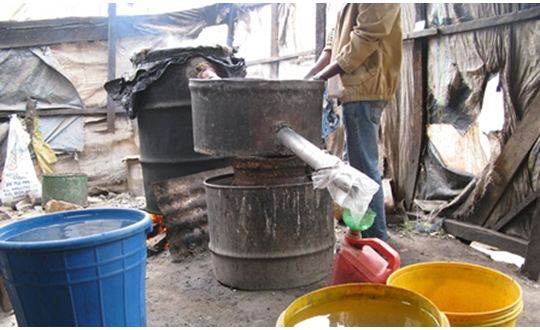Hepatitis B virus (HBV) genotype A1 infection is associated with poor virological control and the rapid emergence of drug resistance among HIV-positive patients starting antiretroviral therapy in Malawi in the absence of tenofovir, investigators report in the online edition of Clinical Infectious Diseases.
Patients started HIV therapy between 2007-09. Antiretroviral therapy (ART) consisted of fixed-dose lamivudine/stavudine/nevirapine. This meant that lamivudine was the only HBV-active drug in their combination.
“A substantial proportion of HIV-1 infected patients…were at risk of progressive liver fibrosis and excess mortality due to poorly controlled HBV co-infection,” comment the investigators. “Suboptimal HBV suppression and emergence of resistance was most evidence in subjects that tested HBeAg-positive and had HBV viral load at treatment initiation.”
A substantial proportion of HIV-positive patients are co-infected with HBV. HIV increases HBV replication and the risk of liver-related disease, especially in the context of low CD4 counts and high HBV viral load.
Guidelines recommend that all HIV-positive patients should be intensively screened for HBV co-infection and that co-infected patients should receive antiretroviral therapy that includes two drugs with activity against both HIV and HBV, typically tenofovir with emtricitabine or lamivudine.
HBV infection is highly prevalent in sub-Saharan Africa. However, few HIV-positive patients in the region are screened for the infection and ART is usually initiated without knowledge of HBV co-infection status. This is especially concerning as until recently, the only drug with HBV activity used in HIV treatment combinations in the region was lamivudine; HBV mono-therapy with this drug is associated with the rapid emergence of drug resistance.
HBV genotype A1 is unique to Africa and some investigators have proposed that it is associated with a relatively benign disease course.
To see if this was the case, investigators monitored HBV levels among HIV-positive patients in Malawi co-infected with HBV genotype A1 and who received ART that included lamivudine as the only HBV-active drug. Follow-up lasted for up to twelve months. A variety of sequencing techniques were used to detect HBV resistance-associated mutations.
A total of 1117 patients started therapy during the study period and 12% tested HBsAg-positive. Half of these co-infected patients were HBeAg-positive. HBeAg-positive status was associated with higher HBV DNA detection rates (p = 0.0014), an increased likelihood of having HBV DNA levels above 2000 iu/ml (p = 0.0006)and higher HBV DNA levels (p < 0.001).
Approximately three-quarters of patients (72%) were retained in care six months after starting HIV treatment and 41% were still in care after twelve months.
At the last follow-up, 96% of patients had achieved an undetectable HIV viral load (below 40 copies/ml). Half the co-infected patients achieved HBV DNA suppression below 14 iu/ml; half the patients with persistent HBV DNA levels achieved HBV RNA suppression.
HBV outcomes were poor among HBeAg-positive patients,” note the authors. “HBV DNA levels initially declined by 4.5 log10 iu/ml, then rebounded, coinciding with the rapid emergence of resistance.”
Use of the Sanger sequencing technique showed that none of the co-infected patients had HBV resistance associated mutations at baseline. However, prevalence was 8% after six months of follow-up, increasing to 33% at the twelve-month follow-up interval. The incidence of resistance was 34 per 100 person-years.
Deep sequencing revealed a higher prevalence of HBV resistance associated mutations. Prevalence was zero at baseline, 19% six months after starting ART and 35% after twelve months of follow-up.
The combined Sanger and deep sequencing results showed that HBV resistance rates were significantly higher in HBeAg-positive compared to HBeAg-negative patients (49% vs. 4%, p < 0.0001). Higher baseline HBV DNA was also associated with the emergence of resistance (p < 0.0001).
“Our data provide clear evidence in support of the motion that HBsAg testing should be introduced as part of routine HIV care in sub-Saharan Africa in order to guide ART selection and early adoption of tenofovir, and to identify patients that require follow-up for liver disease,” conclude the authors.
Reference
Aoudjabe S et al. Hepatitis B virus (HBV) sub-genotype A1 is characterized by high replication levels and rapid emergence of drug resistance in HIV-positive adults receiving first-line antiretroviral therapy (ART) in Malawi. Clin Infect Dis, online edition, 2014.

.jpeg&w=60&q=100&h=60)




.jpeg&w=60&q=100&h=60)





